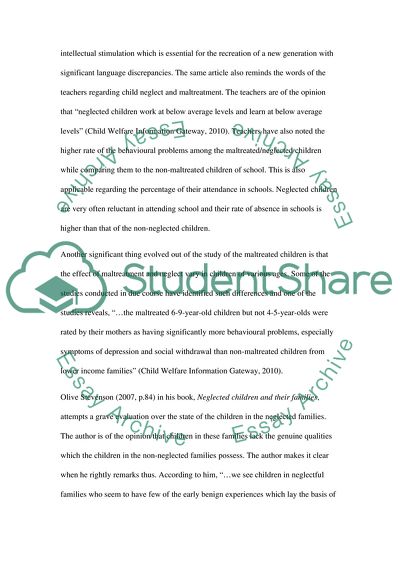Cite this document
(The Effect on Children Neglected or Actively Maltreated Literature review, n.d.)
The Effect on Children Neglected or Actively Maltreated Literature review. Retrieved from https://studentshare.org/social-science/1738819-describe-the-effect-on-children-of-being-either-neglected-or-actively-maltreated-or-both
The Effect on Children Neglected or Actively Maltreated Literature review. Retrieved from https://studentshare.org/social-science/1738819-describe-the-effect-on-children-of-being-either-neglected-or-actively-maltreated-or-both
(The Effect on Children Neglected or Actively Maltreated Literature Review)
The Effect on Children Neglected or Actively Maltreated Literature Review. https://studentshare.org/social-science/1738819-describe-the-effect-on-children-of-being-either-neglected-or-actively-maltreated-or-both.
The Effect on Children Neglected or Actively Maltreated Literature Review. https://studentshare.org/social-science/1738819-describe-the-effect-on-children-of-being-either-neglected-or-actively-maltreated-or-both.
“The Effect on Children Neglected or Actively Maltreated Literature Review”, n.d. https://studentshare.org/social-science/1738819-describe-the-effect-on-children-of-being-either-neglected-or-actively-maltreated-or-both.


